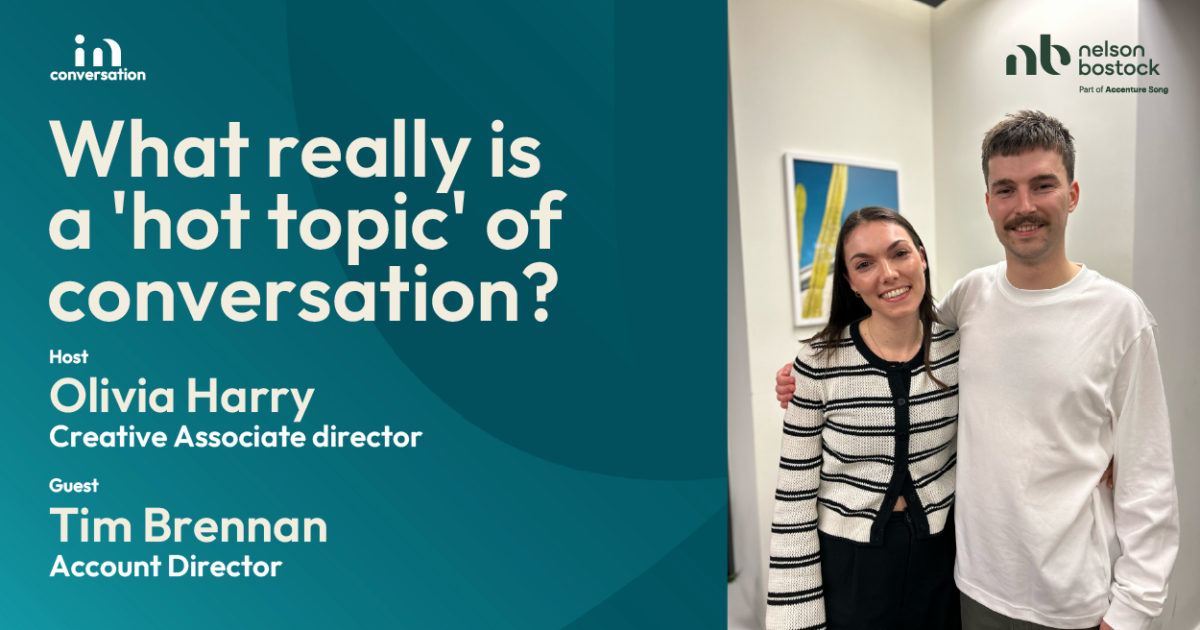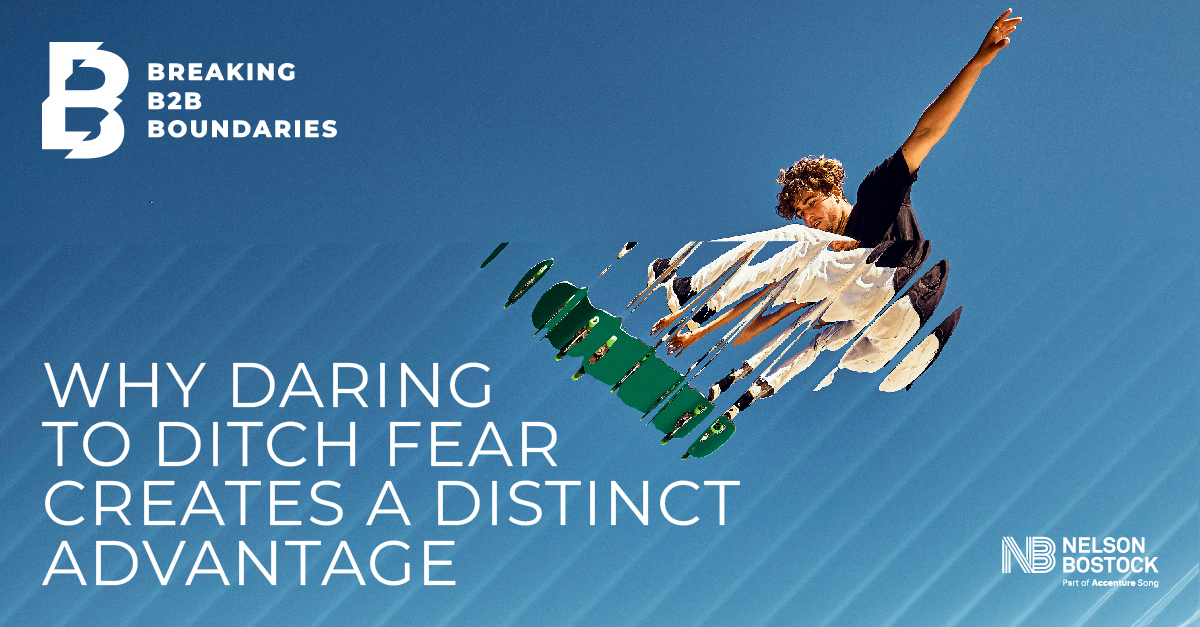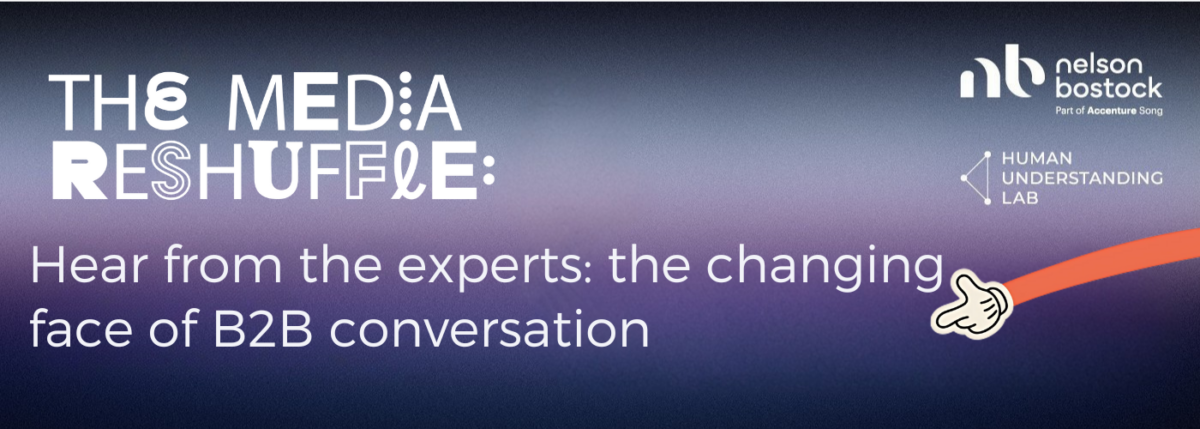You can’t safely go where no-one’s gone before.
There’s a silent killer that’s been stalking the B2B marketing world for years now. It’s not AI. It’s not dwindling budgets. It’s not a lack of appetite for content. It’s dullness. Dull, boring B2B. And that’s because too many brands play it safe in a market where complexity reigns.
The intricate nature of B2B transactions means brands tend to choose bland, inoffensive messaging over ‘take-notice’ creativity to avoid confusion. Or mistake professionalism for a trunk full of jargon. And even opt for carbon copy sameness based on a competitor’s perceived success. The result? Buyers can’t distinguish one brand from another.
But no-one wins big by playing it safe. B2B brands need to care more about being memorable and distinctive. That’s when serious sales happen. As part of our ongoing series on the importance of distinctiveness in marketing, let’s turn our attention to emotion – and one in particular.
The fear factory setting
It’s a universal truth that an emotional pull is the most effective form of persuasion. By creating that personal driver, there’s suddenly an emotional investment backing up what might otherwise be a dry, rational buying decision.
But there’s a worrying trend where brands – specifically B2B – are becoming overly reliant on just one emotion: fear. Whether that’s done by creating scarcity or simple urgency, we see it everywhere now with campaigns warning B2B buyers “don’t get left behind” or “act quickly before it’s too late.”
Marketers are continually tapping into the ‘fear factor’ because B2B typically involves bigger purchases than B2C, and thus bigger risks. Higher stakes, more hoops to jump through and more decision makers to please give rise to the fear of getting it wrong. There’s a fear of causing economic loss, experiencing professional embarrassment or being sent to the back of the competitive queue. And, of course, there’s now loads of tech-fuelled FOMO in this space.
Naturally, many B2B brands now rest their hat on promoting themselves as the safest choice in the face of business hardship. While this currency of reassurance can be effective, it’s a mistake to think fear should be the go-to emotion for every campaign. This default strategy means businesses are missing out on the full kaleidoscope of emotions to engage audiences – where’s the joy, amusement, surprise, even envy? Take the most successful B2C campaigns, the ones that stay in your memory for months, even years. They use a range of emotions. Some might cause alarm, but they also make you smile, laugh, tear-up, gasp… and that’s why B2C is often more exciting and enticing.
There’s a curious irony here – fearmongering itself has become the safe option. Lots of brands are banking on using the ‘fear factor’ for sales conversion but are too reluctant to explore alternative marketing methods themselves. So, at the end of the working day, fear is no longer very distinctive.
What difference does distinctiveness make anyway?
If sales success is the ‘what’, then distinctiveness is the ‘how’. By diversifying the way they harness different emotions, B2B brands can foster deeper relationships with buyers.
Using a broader range of emotions not only provides a more balanced and compelling narrative, but also reflects a more nuanced understanding of B2B decision makers – who are, after all, people who experience all these emotions. And people are often not very logical or rational in their motivations.
B2B purchasers are almost 50% more likely to buy a product or service when they see personal value — such as opportunity for career advancement1.
Google’s 2012 findings about B2B buyers still ring true today. It’s that personal value, established through an emotional connection, which keeps buyers invested. And how did that come about? By being distinctly memorable and relevant – with inspiring content that doesn’t just rely on the one-trick-pony of jeopardy, but deeply resonates with the right audience, at the right time.
Evoking different emotional responses in decision makers helps you cut through the market. It’s not about being brave. Or being different for the sake of it. It’s about recognising that a set of distinctive brand assets leads to top-of-mind awareness.
So, when your next creative campaign opportunity comes knocking, try branching out from familiar territories where your scope for impact is limited. Because once your brand nails this distinctive quality in its marketing, you’ll start to truly stand out.
Keen to know how to make your B2B content emotionally compelling and break boundaries?
Sign up for the next piece in our distinctiveness campaign.












